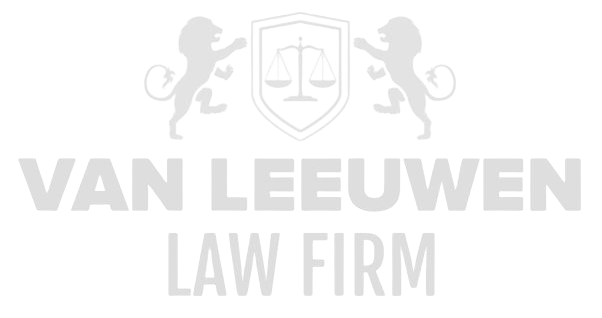Digital transformation is not a sleek buzzword or a superficial trend; it is the backbone of strategic growth and the beating heart of modern enterprises. Yet, this very transformation conceals a legal minefield that forgives no misstep. Fraud, money laundering, bribery, and sanctions violations cast their shadows over every new tool, every data platform, and every automation initiative. What promises efficiency and transparency on the surface can, under the hood, conceal manipulation of datasets, unauthorized access to confidential information, or compromise of financial integrity. For executives, this is far from an abstract concern: a single digital misstep can destroy a company’s reputation, undermine its market position, and trigger personal liability that could irrevocably seal the fate of the organization.
In this high-stakes environment, rule-of-law discipline demands an approach that is cool, clinical, and uncompromising. Innovation without a normative anchor is a mistake; algorithms without an audit trail are an invitation to liability; data strategies without sharply honed governance are a recipe for disaster. Executives who implement digital solutions without a robust legal and operational framework are playing a dangerous game with regulators and judicial authorities who show no mercy for those who fail catastrophically in control. Every document, every process, every data flow must be demonstrably secure, auditable, and legally airtight, because any weakness will be exploited by adversaries.
It is both an art and a duty: embedding technology within a culture of integrity, implementing rigorous control objectives, establishing diligent audit mechanisms, and ensuring that risk assessments bite in practice—not merely on paper. Only such a structured and uncompromising system enables the C-suite to steer the enterprise through the dual pressures of innovation and compliance, maintain continuity, prevent escalation, and build a legal shield that withstands even the harshest scrutiny. Those who fall short tread on thin ice, where personal liability and institutional failure are only a misstep away.
Technology Contracts and Outsourcing
Technology contracts form the foundation for collaboration between organizations and IT service providers. Clear agreements on scope, service levels, and intellectual property rights are essential to prevent misunderstandings and disputes. When drafting SaaS, PaaS, and IaaS agreements, legal teams must establish specific Service Level Agreements (SLAs) detailing response and recovery times, uptime percentages, and penalty clauses for non-compliance.
Outsourcing IT functions introduces additional challenges, such as ensuring data security and privacy protection with third parties. Processor agreements under Article 28 GDPR are required to guarantee that service providers implement appropriate technical and organizational measures. Exit mechanisms and transition plans must also be secured to ensure critical IT services can be seamlessly transferred upon contract termination or in unforeseen circumstances.
Project agreements for custom software and hardware procurement also require legal attention, with clear phasing based on milestones, acceptance testing, and change procedures. Escalation mechanisms and dispute resolution—preferably through mediation or arbitration—must be structured to keep projects on schedule and budget while effectively managing technology risks.
E-Commerce, Cookies, and Direct Marketing
In the world of e-commerce, consumer rights and privacy regulations are closely intertwined. Online stores must comply with consumer protection laws, providing clear information about products, withdrawal rights, and secure payment methods in accordance with PSD2. At the same time, cookies and tracking technologies must comply with ePrivacy and GDPR requirements, including unequivocal opt-in mechanisms and transparent cookie statements.
Implementing a global cookie strategy requires careful coordination with local laws across the EU, UK, and other jurisdictions. Consent Management Platforms (CMPs) must be technically configured so that all third-party tags are activated only after explicit consent. Legal review of banner text, presentation, and opt-out functionality prevents enforcement actions by regulators and reputational damage due to fines.
Direct marketing via email, SMS, and personalized advertisements requires nuanced application of legal bases: consent versus legitimate interest. Wireless telecommunications regulations (e.g., PECR in the UK) and national marketing laws prescribe specific opt-out procedures and sending limitations. Legal guidance is essential to ensure campaigns run compliantly while maintaining high response rates.
Privacy Protection and Incident Management
Privacy protection spans policy to technical implementation: privacy-by-design and privacy-by-default must be embedded in all phases of system development. Conducting Data Protection Impact Assessments (DPIAs) is required for high-risk processing, such as big data applications and biometric monitoring. Each DPIA includes risk identification, mitigation strategies, and documentation of chosen measures.
Processor agreements and joint controller arrangements ensure accountability for all parties involved in personal data processing. Incident management procedures include protocols for data breach notification under Article 33 GDPR, with meticulous reporting to the Dutch Data Protection Authority (AP) within 72 hours and communication plans for affected data subjects.
Continuous monitoring and audits—both technically via SIEM tools and organizationally through periodic compliance reviews—provide insight into the effectiveness of privacy measures. Legal assessment of audit findings informs policy adjustments and corrective actions, keeping organizations up-to-date in privacy compliance.
Artificial Intelligence and Compliance
Drafting AI contracts requires specific attention to copyright over models and training data, as well as agreements on output ownership and liability. License agreements must explicitly define who retains ownership of new AI outputs and any restrictions on model reuse in subsequent projects. Transparency clauses are essential to support responsible AI practices.
Organizational AI policies include rules for data collection, bias monitoring, and responsible algorithmic decision-making. AI impact assessments analyze potential discrimination and safety risks, establishing reporting lines for internal audit teams and regulators. Human-in-the-loop requirements and review procedures ensure automated decisions can be corrected.
In anticipation of the EU AI Regulation, compliance roadmaps categorize high-risk AI systems, establish governance frameworks, and set up certification processes. Contractual obligations with AI suppliers include requirements for bias audits, explainability reports, and continuous model validation, minimizing legal risks associated with large-scale AI adoption.
Sustainability, ESG, and Diversity in Tech
Sustainability and ESG initiatives in the technology sector are not merely image-driven; they are integral to strategy and risk management. Tech companies implement cleantech solutions, energy-efficient data centers, and circular production models to reduce their carbon footprint. Legal advice supports GHG accounting, compliance with EU sustainability legislation, and reporting under CSRD guidelines.
Diversity and inclusion are increasingly prioritized at the board level, driven by societal pressure and regulatory initiatives. Legal guidelines for non-discrimination in recruitment and promotion procedures, as well as transparency in compensation policies, help tech companies foster inclusive workplace cultures. Contracts with recruitment partners include clauses for diversity targets and monitoring.
Financial and social due diligence during investment rounds assesses ESG risks and CSR performance of startups. Legal frameworks for impact investments and green bonds ensure sustainability claims—such as “climate neutral” or “fair trade”—are legally substantiated, mitigating risks of greenwashing and reputational damage.













